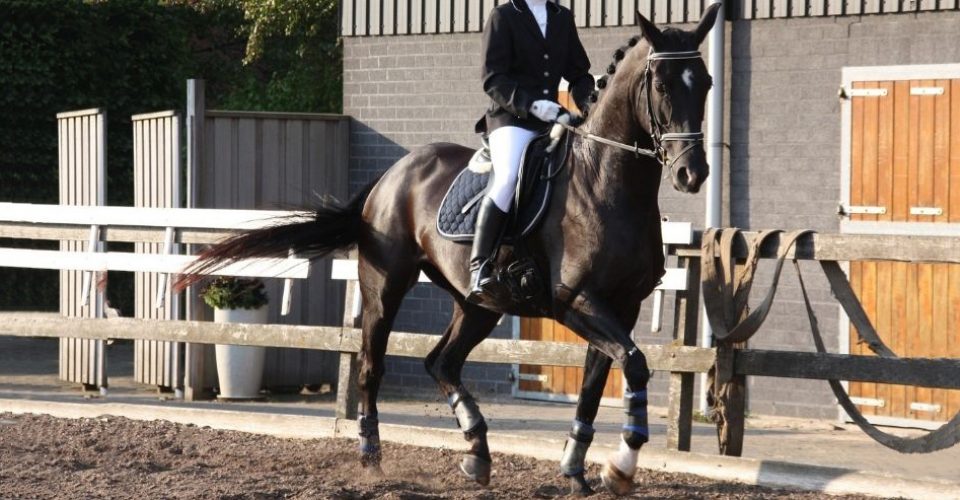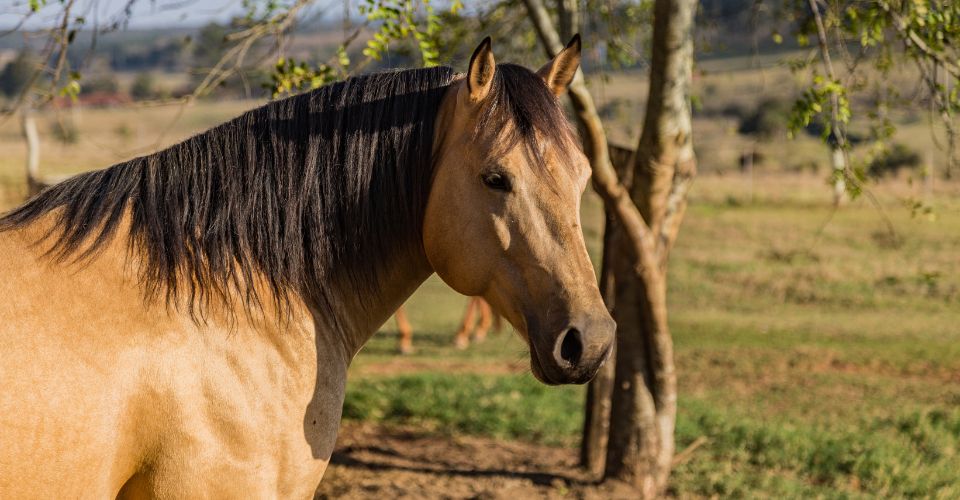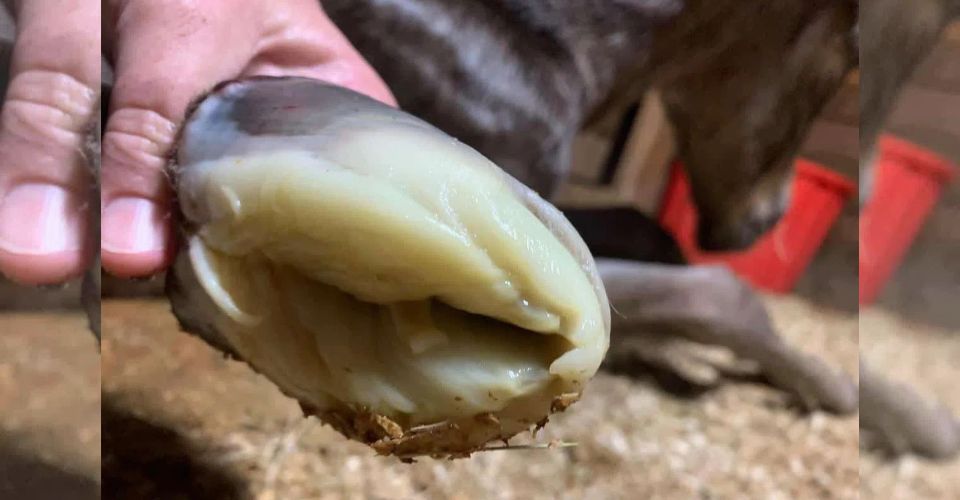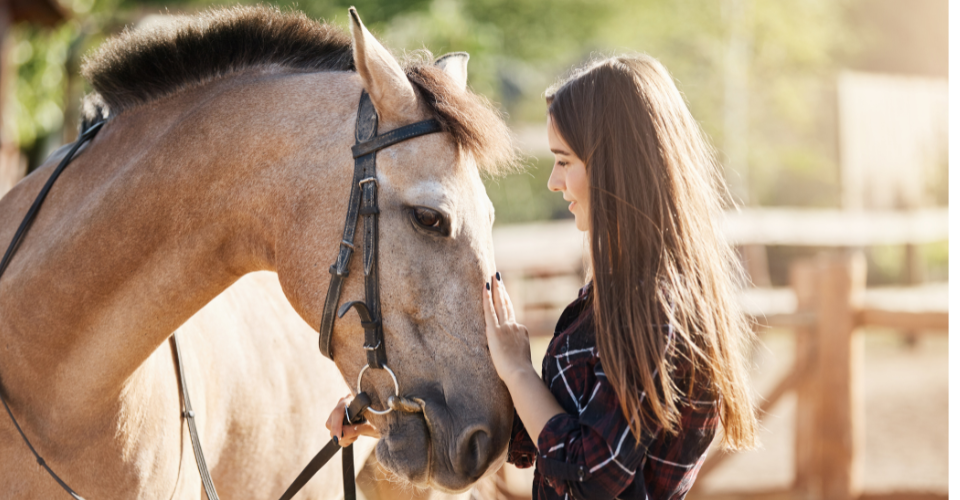Dressage is a sport of long history and global reach. It is included in the Olympics and has the same requirements and goals when played anywhere in the world. And, above all, it is not without any purpose: it forms a great bond between the rider and the horse and develops the latter into a confident, comfortable, and athletic equine.
But what are some of the finest dressage horse breeds? Well, firstly, these breeds are different for different levels, and, secondly, it depends solely on some factors such as the trainability and temperament of the horse, and generally, it is not breed-specific. That said, some horse breeds are better at it than others.
Based on those levels and traits, you will find here a list of such horse breeds.
Equestrian Vs. Dressage: What Is the Difference?
What is Equestrian?
Equestrian is a broader term of Olympic sports, and dressage is a part of it. Equestrian comprises of three tasks in total, one coming after another: dressage, showjumping, and eventing. A competing horse has to go through each of these stages one by one.
What is Dressage?
The first stage of the Olympic equestrian triplet, dressage is the art of training a horse to its full potential. It involves a series of movements performed by the rider to give their horse aids for performing advanced moves. It, hence, gives an impression that the horse is dancing with the rider.
Did You Know?
Dressage has evolved from the French word “dresseur,” which means training.
15 Finest Dressage Horse Breeds
Having understood the purpose and basics of dressage, here is a list of the 15 best dressage horse breeds for all levels, namely, beginner, inexperienced, and experienced, five for each.
Five Dressage Horse Breeds for Beginners
There is no need for one to buy a particular steed just for dressage because, at the beginner’s level, dressage can be carried out at literally any horse. Nevertheless, some horses are more suitable for inexperienced folks because of their certain characteristics. Based on those, here are our top picks:
1 –Friesian
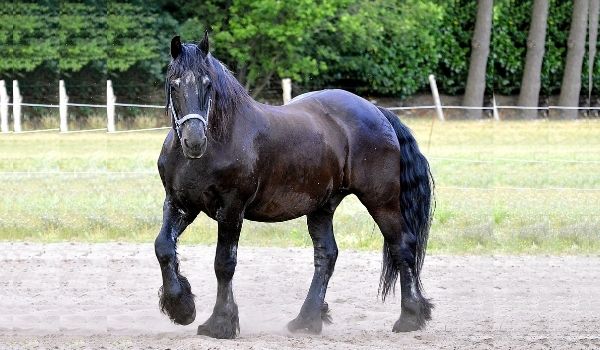
Friesian Breed Overview
Height: 15 to 16 hands
Weight: 1,200 to 1,400 pounds
Colors: Black
Lifespan: Around 16 years
Personality: Friendly
Place of Origin: Friesland, Netherlands
Also known as the Belgian Black, the Friesian is the oldest domesticated horse breed in the European continent. Though Friesians are thousands of years old and were used as war horse breeds, they are widely popular today because of their use in dressage, mainly because of their stylish black coats, elegant way of moving, and the ability to lift their knees high. They are especially popular with the inexperienced because of their affection and friendliness.
2 –Appaloosa
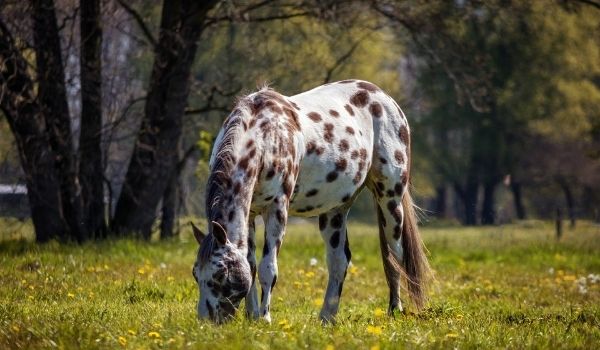
Appaloosa Breed Overview
Height: 14 to 16 hands
Weight: 950 to 1,200 pounds
Colors: Bay, black, chestnut, palomino, buckskin, cremello/perlino, roan, gray, and dun with a spotted coat and striped hooves
Lifespan: Around 30 years
Personality: Intelligent and kind
Place of Origin: The United States
Best known for its spotted skin and blue eyes, the Appaloosa horse breed is said to have originated in the Nez Percé Indian territory of North America. It is widely believed that they are decedents of wild Mustang horses, who were the progeny of Spanish horses that were brought by the explorers. Appaloosa horses are all-rounders: they are good for dressage and pretty much excel in everything they are trained in. They are good for the first-timers because they are quite easy to train.
3 –Andalusian Horse
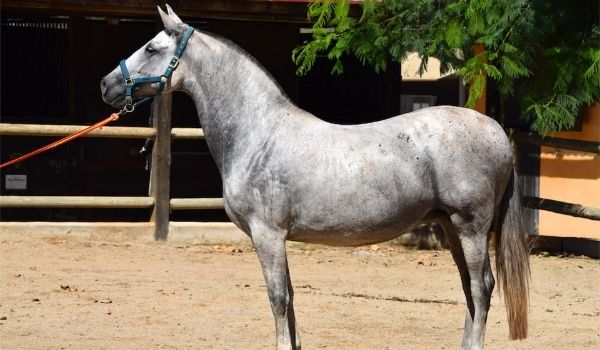
Andalusian Horse Breed Overview
Height: About 15 hands
Weight: About 1,100 pounds
Colors: Commonly gray and black
Lifespan: 20 to 25 years
Personality: Docile and sensitive
Place of Origin: Spain
Also known as the Pure Spanish Horse, the Andalusian horse breed comes from the Iberian Peninsula. Andalusian horses were first bred by Carthusian Monks during the Middle Ages. Known for stamina and athleticism, they are great at dressage and show jumping. Besides, they are among the fastest horse breeds with a speed of 50 miles an hour.
They are a good choice for beginners because of their ability to effectively maintain balance. However, they fall among the expensive horses – they not only have a hefty price tag but also are a bit costly to maintain.
4 –Gypsy Vanner
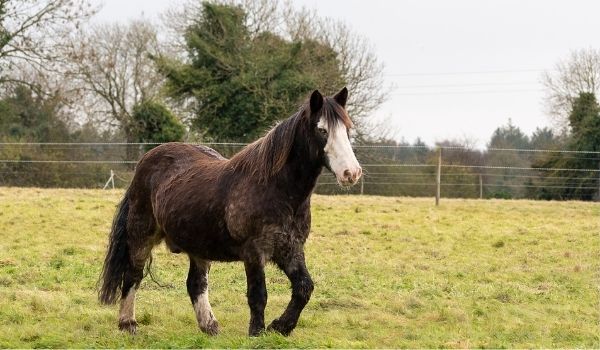
Gypsy Vanner Breed Overview
Height: 12 to 16 hands
Weight: 1,000 to 1,800 pounds
Colors: Tobiano, blagdon, skewbald, and piebald
Lifespan: 20 to 25 years
Personality: Friendly
Place of Origin: Ireland
The Gypsy Vanner horse breed was created during the 19th century. However, the present type originated after the Second World War. Gypsy Vanners are suitable for non-traditional dressage because they are muscular and easy-going. Nonetheless, they have gained fame among the inexperienced mainly because of their athleticism.
The Gypsy King!
The Gypsy King is a famous horse that was brought to the United States back in the year 1998. Since then, his photographs have been seen in various calendars and magazines.
5 – The Arabian

Arabian Horse Breed Overview
Height: About 15 hands
Weight: 800 to 1,000 pounds
Colors: Bay, black, chestnut, roan, and gray
Lifespan: 25 to 30 years
Personality: Kind and calm
Place of Origin: The Arabian Peninsula
About three and a half millennia old, the Arabian horse is one of the oldest horse breeds of the equine world. Their unique head shape and high tail carriage make them stand out among other horse breeds. Arabian horses are a cool option for dressage due to their remarkable overall appearance and strength and being light in weight. Moreover, their kind temperament makes them good with beginners. However, these horses are not usually seen in dressage competitions because they were originally bred for long journeys and endurance.
Five Dressage Horse Breeds for Intermediate Riders
If the rider is neither a novice nor a champ, they may get a suitable horse from the list below because these equines have some good track records, desirable in dressage horse breeds.
6 –Westphalian
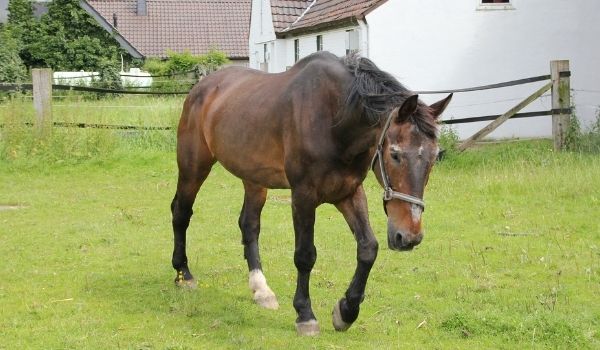
Westphalian Horse Breed Overview
Height: 15.2 to 17.2
Weight: 1,000 to 1,300 pounds
Colors: Bay, black, chestnut, and gray
Lifespan: 25 to 30 years
Personality: Agile
Place of Origin: Germany
The Westphalian horse breed originated in Western Germany during the 19th century. Athletic and eager to please, Westphalians are great in show jumping, competitive riding, and dressage. In fact, they are one of the Olympic dressage horse breeds that have won several gold medals. In addition, they stood fifth in dressage in the 2010 ranking by the World Breeding Federation by Sport Horses (WBFSH).
7 – The Selle Français
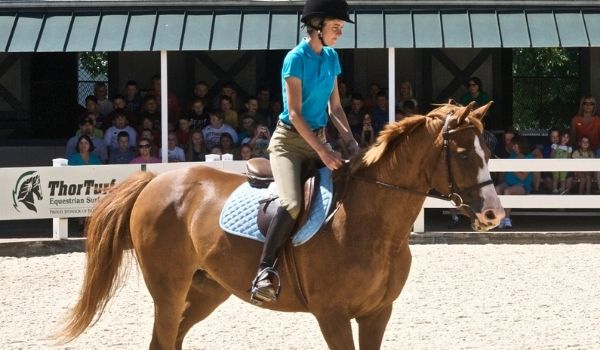
The Selle Français Horse Breed Overview
Height: 15.1 to 17.3 hands
Weight: About 1,300 pounds
Colors: Bay and chestnut
Lifespan: Around 30 years
Personality: Quiet, friendly, and competitive
Place of Origin: France
The Selle Français (meaning French Saddle Horse) breed was created in the year 1958. Nowadays, Selle Français horses are primarily used for dressage and eventing. Being a classic example of sport steeds, these horses are strong, sharp, and great at learning. They have a stylish gait and perform great at all equestrian events.
8 –Danish Warmblood
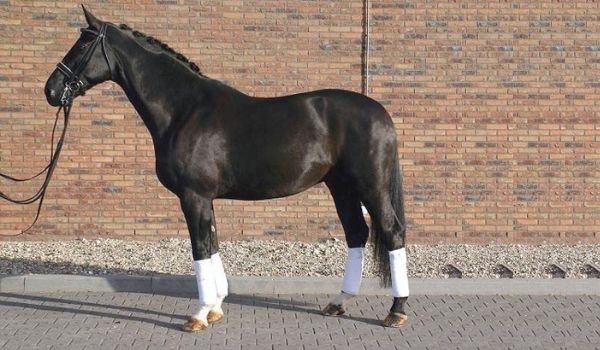
Danish Warmblood Horse Breed Overview
Height: 15.3 to 17 hands
Weight: 880 to 1,100 pounds
Colors: Bay, black, chestnut, and gray
Lifespan: 25 to 30 years
Personality: Agile and social
Place of Origin: Denmark
The Danish Warmblood is a sporty horse breed that came into existence as a result of a cross between Danish and European horses. Danish Warmbloods have strong muscles and a smooth gait and have shown spectacular results in eventing and dressage. Having a cooperative temperament, these steeds get along with their dressage riders very easily. In the year 2001, the North American Danish Warmblood Association was established.
9 –Lusitano

Lusitano Horse Breed Overview
Height: 15 to 16 hands
Weight: 900 to 1,100 pounds
Colors: Bay, chestnut, and gray
Lifespan: 25 to 30 years
Personality: Calm, agile, and intelligent
Place of Origin: Portugal
Originating in the Iberian Peninsula, the Lusitano is among the oldest horse breeds in the world. Lusitano horses perform great in all types of equine games – riding, dressage, and jumping. The reason for this excellence is their ability to maintain a cool and calm temperament under pressure.
10 –Paso Fino

Paso Fino Horse Breed Overview
Height: 13 to 15.2 hands
Weight: 700 to 1,000 pounds
Colors: Bay, chestnut, palomino, black, and gray
Lifespan: 25 to 30 years
Personality: Gentle and kind
Place of Origin: Colombia, Puerto Rico
Imported from Spain, the journey of the Paso Fino breed to the Americas is about five centuries old. Paso Finos were solely bred for beauty, stamina, and smooth gait. Today, these beautiful horses are admired for trail riding and dressage. Although these horses are courageous and fiery, they are quite friendly with their riders, making them very suitable for dressage.
Five Dressage Horse Breeds for Experienced Riders
Coming to the best of dressage horse breeds that experienced riders can easily handle, below is the list of dressage horse breeds for experienced riders.
11 –Dutch Warmblood
Dutch Warmblood Horse Breed Overview
Height: 16 to 17 hands
Weight: About 1,430 pounds
Colors: Bay, chestnut, black, brown, and gray
Lifespan: Around 20 years
Personality: Friendly and enduring
Place of Origin: The Netherlands
Probably the latest edition to the warmblood horses of Europe, the Dutch Warmblood is merely about seven decades old breed. Also considered to be the best horse breed for dressage and jumping, these steeds excel in athleticism and style best suited for such competitions. Additionally, this breed scored first place in the 2010 Olympic dressage competitions.
12 –Mustang
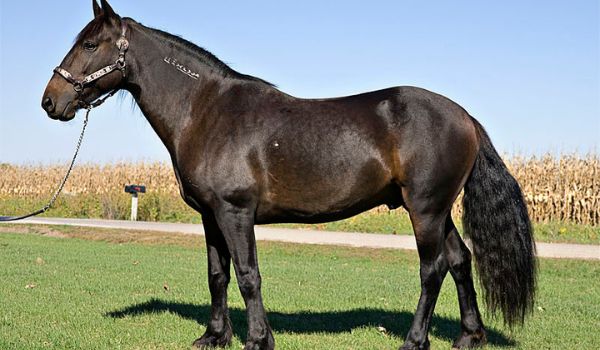
Mustang Horse Breed Overview
Height: 14 to 15 hands
Weight: About 800 pounds
Colors: Bay and chestnut
Lifespan: 25 to 30 years
Personality: Smart and headstrong
Place of Origin: North America
The Mustang horse breed is a descendent of domesticated Spanish horses that were carried to the Americas by the Spanish about 400 years ago. If properly trained, Mustangs do great in equestrian triplet, including dressage, events because they are highly intelligent. In 2018, a Mustang horse won the United States Equestrian Federation’s horse of the year award.
13 –Hanoverian

Hanoverian Horse Breed Overview
Height: 15.3 to 17.2 hands
Weight: About 1,400 pounds
Colors: Bay, black, gray, and chestnut
Lifespan: 20 to 35 years
Personality: Good stamina and style
Place of Origin: Germany
Excelling in all equestrian disciplines, Hanoverian is an old warmblood horse breed. Hanoverians are often seen in the Olympics because of their competitive riding styles. They are also famous for their beauty and strong limbs. What makes them special in consideration with other dressage horses is their distinguishing elegant gait. These horses are also capable of walking longer than average as compared to others.
14 –Oldenburg

Oldenburg Horse Breed Overview
Height: 16 to 17.2 hands
Weight: About 1,700 pounds
Colors: Bay, black, and brown
Lifespan: Around 30 years
Personality: Kind, smart, and hardworking
Place of Origin: Germany
Developed in the 16th century, the Oldenburg is among the oldest warmblood breeds in Europe. Earlier, this breed was solely used in carriage and farming; however, after crossing it with the Thoroughbred, the Trakehner, and the Hanoverian, they developed into a sports breed. All the selective breeding has equipped them with the desirable characteristics of sport horses. Coupled with proper training, they can excel in almost all equestrian games.
15 –Holsteiner
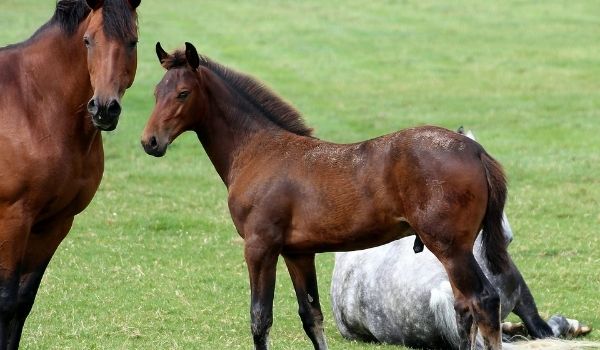
Holsteiner Horse Breed Overview
Height: 16 to 17 hands
Weight: About 1,500 pounds
Colors: Bay and chestnut
Lifespan: Around 20 years
Personality: Agile and loyal
Place of Origin: Germany
The origin of the Holsteiner breed dates back to the 13th century. They are one of the first horse breeds registered in the warmblood category. They have a great balance and are extremely reliable and bold. Their best quality making them a good choice for dressage is their ability to jump exceptionally. Besides, they are highly trainable, athletic, and love to please their riders.
What Makes a Good Dressage Horse?
Selecting a horse for dressage needs to be done carefully because an unsuitable steed can have a hard time getting trained.
In general, good dressage horse breeds have the followings:
- Trainability: The horse must be highly trainable. The horse should not only be willing but also able to understand the trainer’s commands. If a horse is unable to understand the trainer’s commands, training sessions would be fruitless.
- Ability to Jump and Canter: The horse must be good at jumping and cantering because of the dressage requirements. However, it is somewhat correlated with good training and willingness.
- Desirable Temperament: The horse that is not easily spooked is the best choice for dressage and keeping cool in intensive situations.
Dressage Horse Breeds Price
The price of dressage horse breeds depends on their previous training. The more a horse is trained for dressage, the heftier the price tag. Based on this fact, the best-trained horses cost anywhere between USD 60,000 and 100,000.
However, if you are a beginner, you can start training your own horse, or at least lease one, which will cost you about USD 500 a month. Conversely, if you are at some advanced levels, you can go for purchasing a trained horse (the least trained one will cost no less than USD 10,000).

